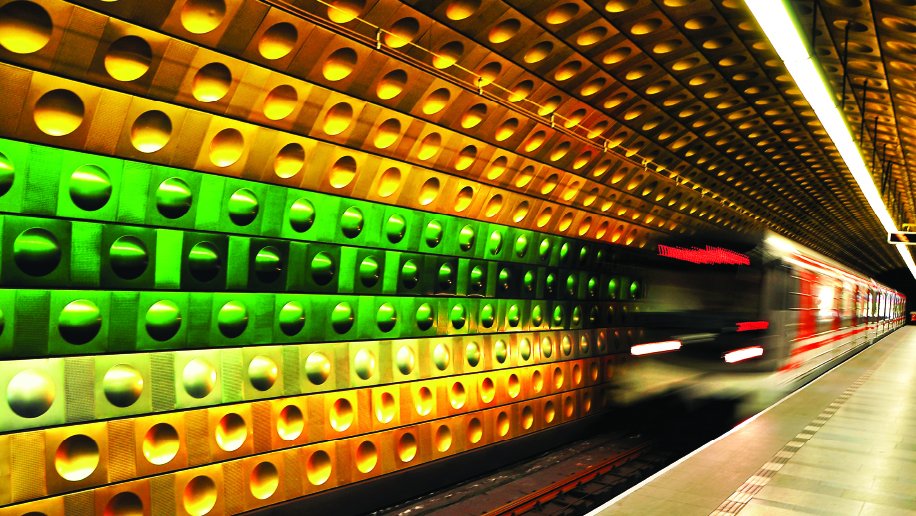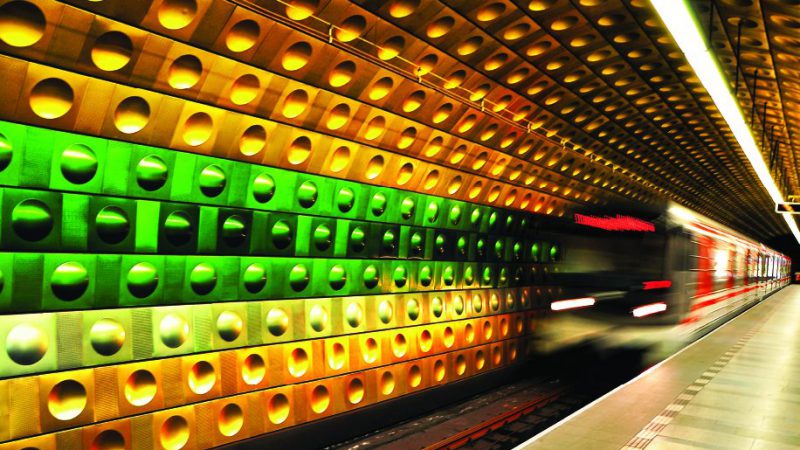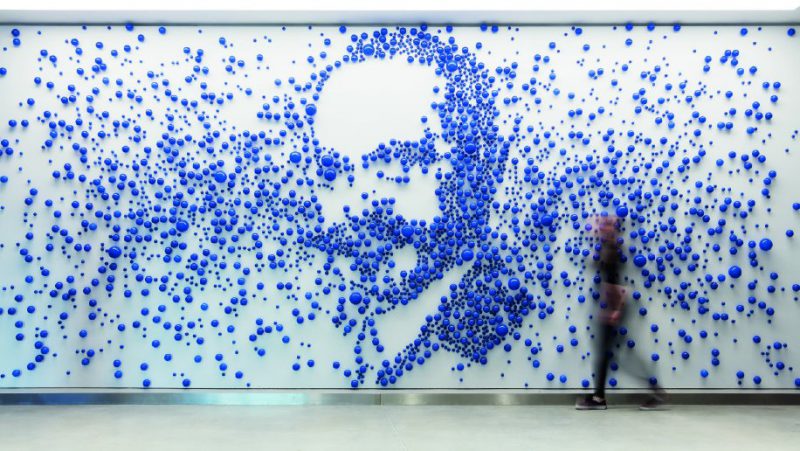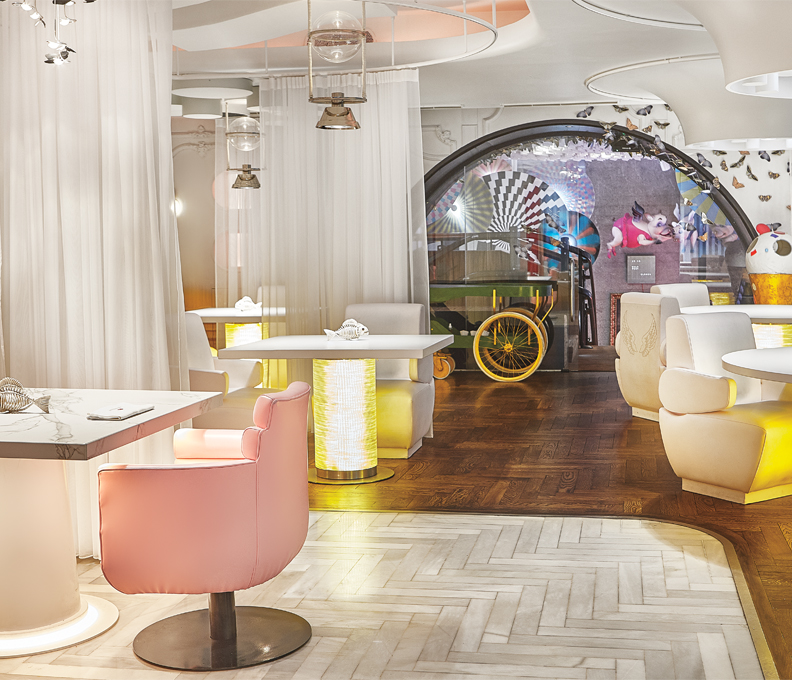Designs for life
The Czech Republic has a rich design heritage, and today’s generation is doing it proud
February 28, 2020

With its rows of concave and convex saucer-shaped panels, ice-smooth glass walls and audacious color schemes, the Prague metro always piques visitor curiosity. Tourist attractions in their own right, the retro-futuristic stations provide an accessible introduction to modern Czech design, which deserves a much higher profile. This year, 30 years since the 1989 Velvet Revolution, offers the perfect opportunity to get acquainted.
There is much to explore, including interior and product design, and glassware, all of which have long enjoyed strong reputations. With their new thinking, young designers are reinvigorating these disciplines and showcasing Czech creativity, consequently attracting global exposure. “Today’s generation is successfully integrated into the design world, and everyone has the same chance to succeed in a Europe without borders,” notes Jan Nemecek of leading design studio Olgoj Chorchoj.
This echoes the internationalism of the celebrated interwar period, which coincided with the first two decades of Czechoslovakia’s existence. Functionalism swept the country, resulting in the likes of Prague’s effortlessly sleek Trade Fair Palace, which was built in the 1920s. Meanwhile, product design icons from the period included the Tatra 77 car, worthy of any sci-fi epic, and Jindrich Halabala’s armchairs, with sweeping armrest curves and pioneering use of tubular steel.
Everything changed in 1938, when the Nazi occupation set about eradicating the Czech national identity. The design scene was further plunged into darkness following 1948’s Communist putsch, which cut the country off from its Western neighbors, making it much more parochial.
Conversely, the communists adopted a money-no-object approach towards the public realm, most notably the Prague metro. Constructed mainly in the 1970s and 1980s, the stations boast lashings of natural materials, including marble, granite, limestone and aluminum. Meanwhile, at Karlovo Namesti (Charles Square) station, the tubular glazed walls by Frantisek Vizner celebrate the centuries-old Czech glassware tradition.
Fresh Thinking
After the Velvet Revolution, designers naturally wanted to catch up. Big names such as Borek Sipek and Otakar Diblik, who had fled communism, re-established connections and taught at art and design schools. “This sped up the process of revitalizing product design. Encouraging students to gain experience abroad was invaluable for further high-quality development,” says Jan Jaros of product design and architecture firm Cohnstudio. He also explains that long-established companies, for instance furniture producer Ton and crystal glass producer Moser, have been reinvigorated since 1989.
When it comes to current trends, designers cite upcycling and taking a new approach to traditional crafts. “And, yes, we really love minimalism. I am also interested in the craze for concrete, in everything from speakers to jewelry and baths,” says Vaclav Cajanek, co-owner of product designer Clap Design. He and others observe that the design scene has moved much closer to that of Western Europe.
“Small studios are not afraid to take risks and are trying to promote themselves on the European scene,” Nemecek says. “They are becoming a driving force of trends. Today, lots of renowned brands are just standing still, but in the Czech Republic I see an opportunity for new brands and also designers’ studios.”
Every October in Prague, practitioners showcase their work at the international Designblok festival, at which “the strength and variety of Czech designers is evident,” Jaros says. Designblok also provides a chance to meet the new cohort of Czech interior designers born after 1989. They are bringing a new perspective, observes Professor Jiri Pelcl, a leading interior designer. “I see inventiveness particularly in the interiors of young creatives, whose boutiques and workshops show evidence of a new visuality based on the rediscovery of traditional products and materials combined in unusual situations,” he says.
Czech glassmakers, traditionally based in the regions beyond Prague and long enjoying worldwide renown, are also taking new approaches to their craft, fusing glass production with other disciplines to great effect. The industry has received a boost from high-profile practitioners such as UK-based Czech architect Eva Jiricna, famous for her spiral glass staircases.
Another well-known figure, Maxim Velcovsky, creates simple, elegant glassworks, and collaborates with Lasvit, known among other things for bold, abstract chandeliers resembling ice sculptures. Velcovsky is optimistic about current trends. “Czech glass is again some of the best in the world, even when it cannot compete price wise with producers from China and Turkey,” he says.
Glass designer Lukas Novak feels similarly positive. “I hope that there will be a further deepening of the glassware tradition, which today in the Czech Republic tends to involve small, family-owned companies, where a great passion for this national ‘family silver’ prevails.”
In the product design sector, craftsmanship in wood also has a strong Czech tradition, particularly in areas such as toy making. Such products are more likely these days to originate from China, but global competition has in turn boosted designers who are emphasizing local tradition and sourcing.
One company doing so is BeWooden, which produces fashion accessories from natural materials. “I spent my childhood at the sawmill at my father’s and fell in love with the texture and smell of wood,” says Ctirad Sara of BeWooden. “We come from the foothills of the Beskydy mountains, and you can see the forests when you look out of the window. Around you are talented people who are masters in their field.”
Bringing It Home
So what lies in store next for Czech design? Professor Michal Fronek, of Prague’s Academy of Arts, Architecture and Design, sees the future in the context of past achievements. “We have something local to draw upon and have our heroes. I appreciate the work of Ladislav Sutnar, who systematically built up awareness of design before 1939.”
Product designer Matej Chabera stresses the need to continue this tradition. “It is easy and necessary for young designers to travel, study and gather experience worldwide. But it is equally important that they bring this value back home to build strong relationships with Czech brands and grow together while doing their best work,” he says.
One designer who has done just that is Prague-based Lucie Koldova, who specializes in product design and furniture. Like many of the younger generation, she epitomizes the easy fusion of local tradition and the global. Spending time in Paris and exhibiting extensively abroad, Koldova rapidly established an international reputation but has returned to Prague. “I work with glass, and glass is why I came back. I discovered what discipline we are good at, and am trying to develop this even further. I feel honored to continue the tradition,” she says.
Koldova collaborates with Brokis, which specializes in lighting and often creates strikingly simple forms. Founded in 2006 by the acquisition of a struggling glassworks, the company enjoys a global reputation and works with Czech and international designers. In this anniversary year, the Czech Republic is currently experiencing a retro revival; by happy coincidence, with their chunky shapes and brown and orange hues, many Brokis products also have a retro look themselves.
Where to Buy
To acquire some Czech design of your own, try the following Prague boutiques:
Czechdesign provides a good introduction to the local scene and showcases both new talent and veteran practitioners. Vojtesska 3, Praha 1; shop.czechdesign.cz
At Deelive, the pared-down space provides a backdrop to home accessories, glass and jewelry. Smetanovo nabr. 334/4, Praha 1; deelive.cz
Maxim Velcovsky founded the Qubus Design Studio; the Qubus Design Gallery stocks both his work and that of other big-hitters. Ramova 1071/3, Praha 1; qubus.cz/en/qubus
For glass, jewelry, furniture and other items from the early days of Czechoslovakia, try Modernista, which specializes in reproductions, including Halabala armchairs. Vinohradska 50, Praha 2; also at the Museum of Decorative Arts, Municipal House and House at the Black Madonna; modernista.cz
Beyond the center, in Prague’s recently designated Art District, the shop at the DOX Centre for Contemporary Art stocks design literature and work by Borek Sipek and Frantisek Vizner. Leading names such as Lukas Novak have exhibited here. Poupetova 1, Praha 7; dox.cz/en





